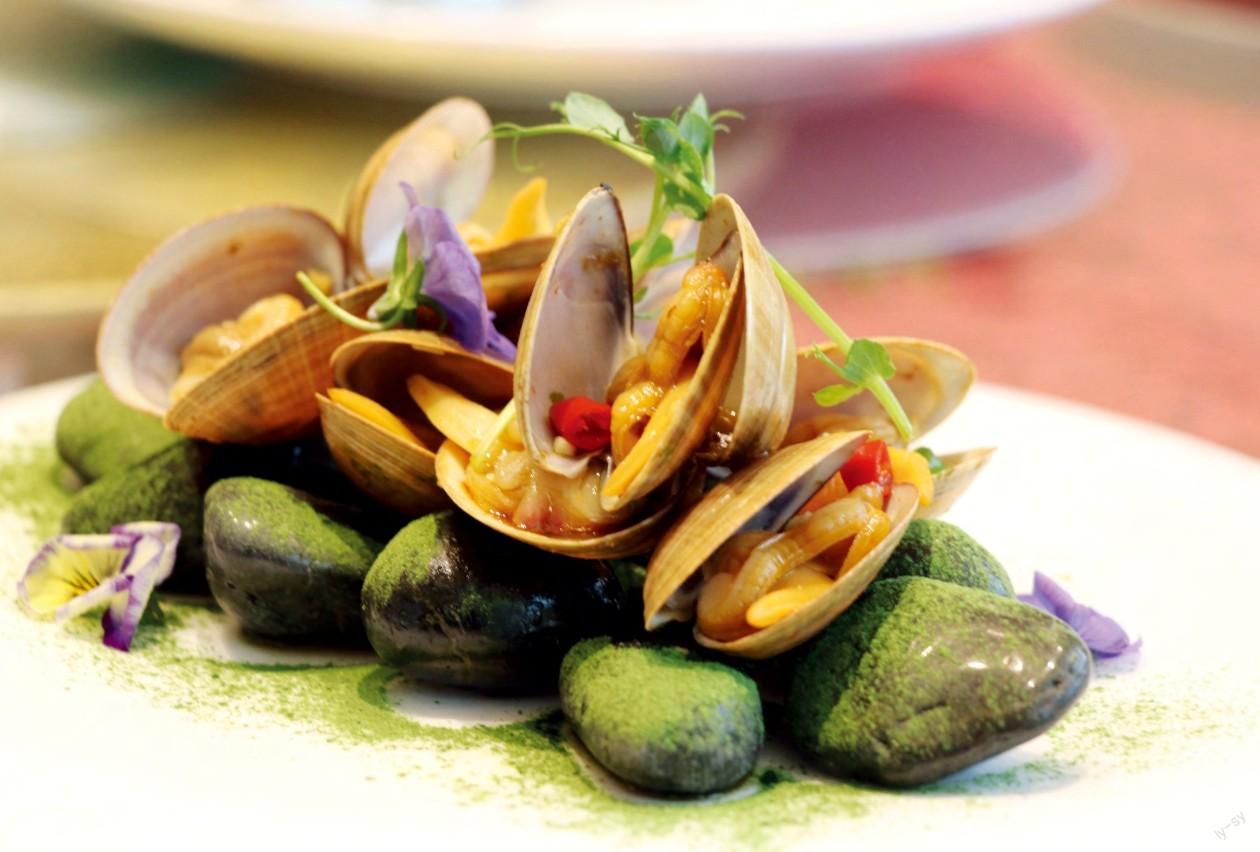麻辣飞蛤
老亭

煙台人所说的蛤,方言读作gǎ,青岛人叫蛤蜊,读成gǎ la,莱州人称其为gé la。蓬莱、大连人喊它为蚬子,在海阳、乳山等地被称作蚬子的却完全是另外一种海鲜。
称呼和读音有点乱,但不管怎么说,蛤就是蛤,海边的人还有不认识蛤的吗?
蛤的品种很多,飞蛤实为蛤中翘楚。一般的蛤,体表粗粝,色彩暗淡,但飞蛤的外壳却光滑如玉,金光闪烁,显得那么富贵、大气。
大多数蛤类寄生于泥沙之中,苟存于阴暗狭小之地,深居简出。飞蛤则大不同,以喷水推进的方式,在广阔的沙面上,来去如飞,随心所欲,如江湖上的剑客侠士般潇洒快意。
最重要的差别还是味道,飞蛤的肉质肥实、脆嫩,不像有些蛤的肉发艮、发黏。
飞蛤的形体也比普通的蛤大一些。麻辣属厚重味,只有大而肥的飞蛤才能“抗”得住,才能体现出这道菜的本味和特色。
前些年,我自己在家做麻辣飞蛤,一个人能吃上两三斤。吃着蛤,喝着冰散啤,用老话来说:给个县太爷也不换!
冷水的蛎子热水的蛤。一般来讲,天热时飞蛤最肥。买上两三斤,尽量买大一点的,再佐以川椒、干辣椒、郫县豆瓣酱或老干妈酱、葱、姜、大蒜、香菜等,先小火温油炸一下花椒、干辣椒,后加入葱、姜、蒜等,再加入适量郫县豆瓣酱或老干妈酱,爆香后倒入洗净的飞蛤,飞蛤一开口即关火,撒香菜段出锅,即成。
这道菜的特点是麻辣鲜香,有着让人称奇的融合之美。它属于复合味的菜品,内容丰富又不失本味,尽显中华文化平和中庸之精妙。
按照这个思路,可麻辣的海鲜类食材实在太多了,如小鲍鱼、螃蟹、扇贝、海虹、爬虾、鱿鱼、红虾等等,很多小杂鱼过油后,亦可用麻辣的方法炒制,我用沙丁鱼等试过,很好吃,用黑鱼、海鲈鱼、大扁口、开冰梭等海鱼做麻辣口的水煮鱼,味道也不错。
川菜的个性主要体现在麻辣上,鲁菜特别是胶东菜的食材主要是海鲜,口味以鲜香为主。麻辣是阳,海鲜为阴,麻辣是刚,海鲜则为柔,阴阳平衡,刚柔相济。从食性上讲,飞蛤性寒,同热性的麻辣类食材配伍,食性互补,也有利于身体健康。
鲁菜的海鲜菜,口味略显单调,有一点“平”。麻辣味的加入,很大程度上丰富和提升了海鲜菜口味的多样性。有了麻辣,好多海鲜菜就有了风骨,就“立”了起来,有了鲜明的特点和个性。
我在北京工作时,单位食堂常用麻辣飞蛤招待客人,每次都大获成功,有时要连上两三盘客人才肯罢休。
天气逐渐热了,大啖飞蛤正当时。
麻辣飞蛤,你麻我、辣我千百遍,我追你、爱你似初恋!
Just as the saying goes, oysters like cold water while clams like hot water. Mactra Chinensis, locally known as flying clams, are generally the fattest during hot weather. Buy one or two kilograms of larger flying clams and prepare ingre- dients such as Sichuan pepper, dry red pepper, Pixian thick broad-bean sauce or Lao Gan Ma sauce, green onion, ginger, garlic, and coriander. First fry the Sichuan pepper and dry red pepper in low-temperature oil on soft fire and then put the green onion, ginger and garlic into it, followed by some Pixian thick broad-bean sauce or Lao Gan Ma sauce. Pour in the cleaned flying clams when fragrant smell comes out and turn off the fire as soon as the clams become open. Sprinkle coriander sections on them before they are poured out of the pot. A plate of delicious spicy fried flying clams is thus cooked.
This dish is characterized by its hot, spicy and delicious taste, which has an amazing beauty of fusion. As a dish with composite flavors, it is rich in content and keeps its original flavor of clams, fully showing the profoundity of Chinese cultures harmony and moderation.

